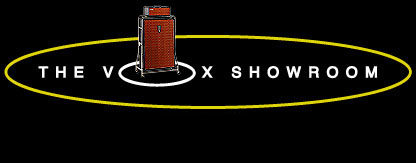Wooden Keys
Prior to the formation of "Jennings Musical Instruments" and Vox in 1957, Tom Jennings operated the "Jennings Organ Company" out of his facility in Dartford, Kent England. Both home and church models were produced. Production commenced in the early 1950s.
The cosmetic style and tonal voicings of Jennings' electronic home and church organs tended to follow the style of traditional church pipe organs. Classically, church pipe organs had wooden keys. Jennings used wooden keys on some of his church and theatre organs as well.
Additionally, some church pipe organs (and for that matter, harpsichords) had color reversed keys, where the natural keys were black rather than white and the sharps were white rather than black. Jennings adopted wooden keys and this reversed key color scheme on a few his electronic church organs.
It seemed natural, from his experience building organs in the 1950's, that Jennings would choose to use wooden keys with a plastic laminate overlay on the portable Continental Organ. When the first Continental Organ was produced in the UK under the supervision of Derek Underdown, Jennings' organ guru, it had wooden keys. It also had the traditional "pipe organ" reversed key color scheme.
In 1966, Thomas Organ in Sepulveda California was developing a version of the Continental Organ that they planned to produce and sell in the United States. They wished to break away from the high costs of shipping and importation of goods from Jennings in the UK.
Electronically, the US version of the organ was complelely different, but Thomas wished to make the look and tactile feel of the US Continental the same as the British model. Despite the fact that Thomas Organ could have easily adopted plastic keys on their Continental, they opted to maintain the sawn wooden keys with plastoc overlays of the JMI British counterpart 301J Continental Organ.
A year later, in 1967, the "301E" version of the single Continental organ was introduced, now produced in Italy. The Italian version had plastic keys.
Key Contacts
Under each key are four key contact wires (or switches, if you prefer) that complete the circuit between the tone generators and the drawbars when the key is depressed.
Figure 1, at left shows a diagram of the key contacts when the key is at rest, or not depressed. Four individual signals from the tone generators enter from the right side of the diagram (through the green dots). These four signals flow through the gold plated wire key contacts. Note that the left side of each of the four key contacts is leaning against the gray contact, which is connected to ground, essentially shorting out the signal from the tone generator. In this position, the key is turned off.
Figure 2 shows the result of depressing the key. The four key contacts have now dropped away from the ground contacts and now complete the circuit to the four red contacts. This action has the connected the output of the tone generators to the 16', 8', 4' and IV rank signals to the drawbar circuitry described in the next web page. The key is "on" in this position.
As you see, there are four individual key contacts under each key on the single Continental Organs. As each single Continental Organ has 49 keys, that means that there are 196 key contacts that must be in correct operating order to allow the proper operation of the organ.
|

